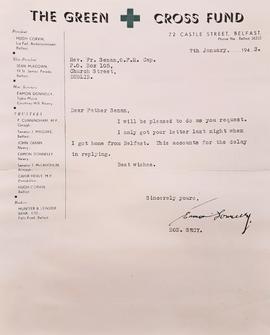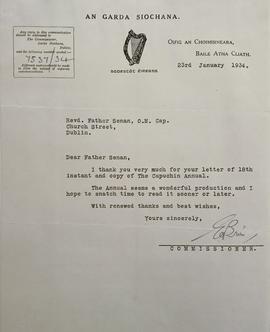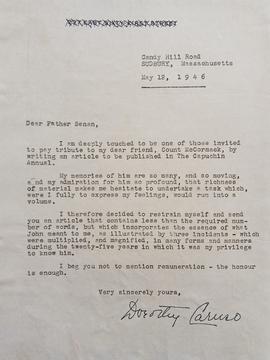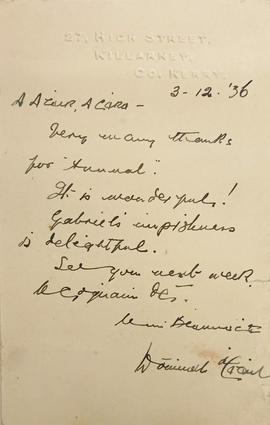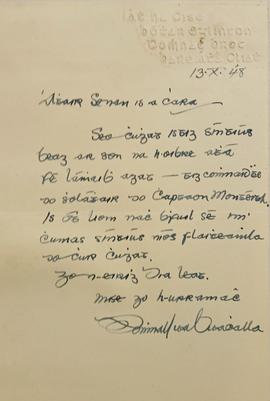Letter from Eamon Dore to Fr. Senan Moynihan OFM Cap. providing information on his efforts to provide some form of financial assistance to Robert Monteith and ‘old 1916 comrades’. He also encloses £10 for the Monteith fund.
A letter from Eamon Donnelly, 72 Castle Street, Belfast, to Fr. Senan Moynihan OFM Cap.
A letter from Eamon (‘Ned’) Broy, Garda Commissioner, to Fr. Senan Moynihan OFM Cap., thanking him for a copy of ‘The Capuchin Annual’.
Letter from Douglas Hyde ('An Craoibhín'), Ratra Park, Frenchpark, County Roscommon, to Fr. Senan Moynihan OFM Cap., congratulating him on the latest edition of ‘The Capuchin Annual’.
A letter from Dorothy Caruso to Fr. Senan Moynihan OFM Cap. agreeing to contribute an article for a feature on her ‘dear friend’ John McCormack to be published in ‘The Capuchin Annual’.
Letter from Doreen de Padilla (Doreen Vanston) to Fr. Senan Moynihan OFM Cap. expressing her pleasure on the reproductions of her woodcuts in the latest edition of ‘The Capuchin Annual’.
A letter from Doran Hurley to Fr. Senan Moynihan OFM Cap. regarding an offer to write an article on American Irish Historical Society for the next edition of ‘The Capuchin Annual’.
Letter from Donal O’Cahill, 27 High Street, Killarney, County Kerry, to Fr. Senan Moynihan OFM Cap., congratulating the friar on the latest edition of ‘The Capuchin Annual’.
A letter from Domhnall Ua Buachalla (1866-1963), Donnybrook, Dublin, to Fr. Senan Moynihan OFM Cap.
A letter from Domhnall Ua Buachalla to Fr. Senan Moynihan OFM Cap. enclosing a contribution to the Monteith fund.

